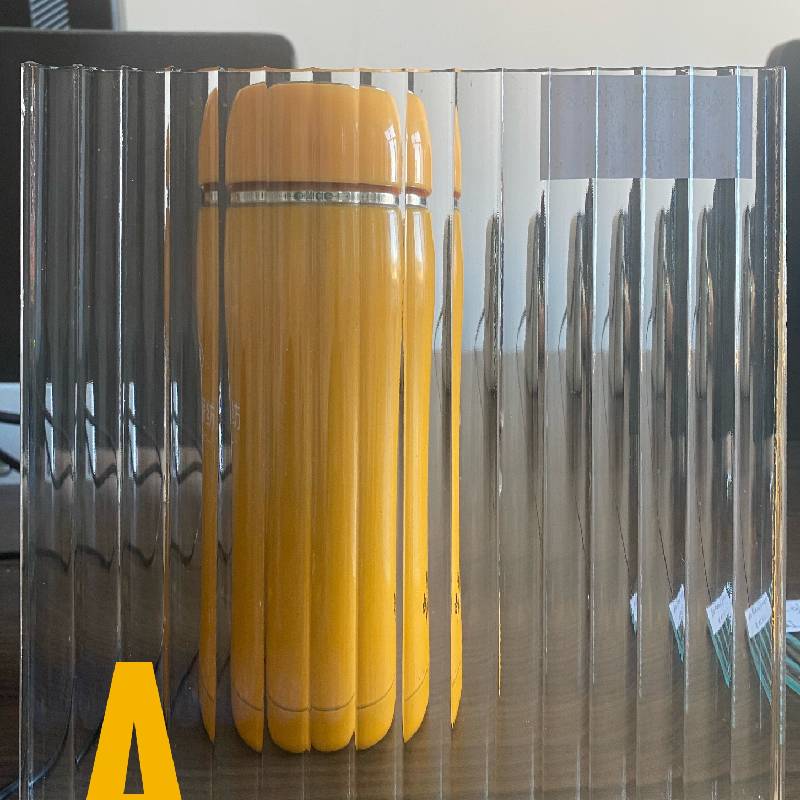The float glass process revolutionized the glass manufacturing industry by providing a seamless and high-quality method for producing flat glass. This method, which has become the industry standard, offers superior clarity and structural integrity compared to other production techniques. Understanding the float glass process is crucial for manufacturers looking to produce an impeccable product that meets the ever-increasing demands for precision and quality in today's markets.

Invented in the 1950s by Sir Alastair Pilkington, the float glass process involves floating molten glass on a bed of molten tin, allowing gravity and surface tension to create a perfectly flat and uniform glass surface. This innovative process eliminated the need for extensive polishing and grinding methods previously required to achieve similar results. Rapidly adopted worldwide, it facilitated large-scale production of glass sheets with unparalleled smoothness and consistent thickness.
From an expert perspective, the technical precision of the float glass process lies in its controlled environment. The process begins with raw materials such as silica sand, soda ash, limestone, and various additives, which are melted in a furnace at temperatures exceeding 1700°C. This molten glass is carefully poured onto the molten tin bath, maintained at approximately 1000°C, where it spreads evenly without any external mechanical influence. This critical stage ensures the glass's high-quality surface and uniform thickness, which are essential for both architectural and automotive applications.

Professionals in the glass manufacturing industry understand the importance of a meticulously maintained production line when implementing the float glass process. Crucial elements such as temperature control, atmosphere within the float tank, and the chemical composition of the glass mixture must be continuously monitored. Precise control over these factors minimizes defects and ensures the final product meets exacting safety and performance standards.
A key advantage of the float glass process is its scalability. It's perfectly suited to produce vast quantities of glass efficiently, making it ideal for large construction projects and automotive needs, where consistent quality and supply are non-negotiable. For manufacturers, investing in state-of-the-art float glass technology not only enhances production capabilities but also positions them as leaders in a competitive field, offering products that meet stringent environmental and engineering certifications.
float glass process
In terms of reliability and trustworthiness, the float glass process has been around for decades, with continuous improvements making it more reliable than ever.
Many leading glass producers have shared their insights and case studies, reinforcing the efficacy of this method. Academic and industry-backed research consistently demonstrates the benefits of float glass in building energy-efficient structures and creating advanced glazing solutions that contribute to sustainable architecture.
Moreover, consumer trust in products manufactured using the float glass process is evident from the widespread usage in everyday applications—ranging from windows and mirrors to the screens of electronic devices. The process not only delivers optical clarity and durability but also ensures consistency, significantly reducing material wastage and enhancing eco-friendly production methods.
For businesses exploring glass manufacturing technologies, embracing the float glass process signifies a commitment to quality and sustainability. It reflects an understanding of modern engineering challenges and an ability to deliver products that meet and exceed consumer expectations. As the market pushes for innovative solutions, mastery of the float glass process remains a cornerstone for companies striving to achieve excellence and maintain trust with their stakeholders.
In summary, the float glass process stands as a testament to industrial prowess and innovation, bringing together expertise, authority, and trustworthiness in the production of high-quality glass. Harnessing this technology not only prepares manufacturers to meet current demands but also positions them to pioneer future advances in the field, elevating industry standards globally.
 Afrikaans
Afrikaans  Albanian
Albanian  Amharic
Amharic  Arabic
Arabic  Armenian
Armenian  Azerbaijani
Azerbaijani  Basque
Basque  Belarusian
Belarusian  Bengali
Bengali  Bosnian
Bosnian  Bulgarian
Bulgarian  Catalan
Catalan  Cebuano
Cebuano  Corsican
Corsican  Croatian
Croatian  Czech
Czech  Danish
Danish  Dutch
Dutch  English
English  Esperanto
Esperanto  Estonian
Estonian  Finnish
Finnish  French
French  Frisian
Frisian  Galician
Galician  Georgian
Georgian  German
German  Greek
Greek  Gujarati
Gujarati  Haitian Creole
Haitian Creole  hausa
hausa  hawaiian
hawaiian  Hebrew
Hebrew  Hindi
Hindi  Miao
Miao  Hungarian
Hungarian  Icelandic
Icelandic  igbo
igbo  Indonesian
Indonesian  irish
irish  Italian
Italian  Japanese
Japanese  Javanese
Javanese  Kannada
Kannada  kazakh
kazakh  Khmer
Khmer  Rwandese
Rwandese  Korean
Korean  Kurdish
Kurdish  Kyrgyz
Kyrgyz  Lao
Lao  Latin
Latin  Latvian
Latvian  Lithuanian
Lithuanian  Luxembourgish
Luxembourgish  Macedonian
Macedonian  Malgashi
Malgashi  Malay
Malay  Malayalam
Malayalam  Maltese
Maltese  Maori
Maori  Marathi
Marathi  Mongolian
Mongolian  Myanmar
Myanmar  Nepali
Nepali  Norwegian
Norwegian  Norwegian
Norwegian  Occitan
Occitan  Pashto
Pashto  Persian
Persian  Polish
Polish  Portuguese
Portuguese  Punjabi
Punjabi  Romanian
Romanian  Russian
Russian  Samoan
Samoan  Scottish Gaelic
Scottish Gaelic  Serbian
Serbian  Sesotho
Sesotho  Shona
Shona  Sindhi
Sindhi  Sinhala
Sinhala  Slovak
Slovak  Slovenian
Slovenian  Somali
Somali  Spanish
Spanish  Sundanese
Sundanese  Swahili
Swahili  Swedish
Swedish  Tagalog
Tagalog  Tajik
Tajik  Tamil
Tamil  Tatar
Tatar  Telugu
Telugu  Thai
Thai  Turkish
Turkish  Turkmen
Turkmen  Ukrainian
Ukrainian  Urdu
Urdu  Uighur
Uighur  Uzbek
Uzbek  Vietnamese
Vietnamese  Welsh
Welsh  Bantu
Bantu  Yiddish
Yiddish  Yoruba
Yoruba  Zulu
Zulu 


